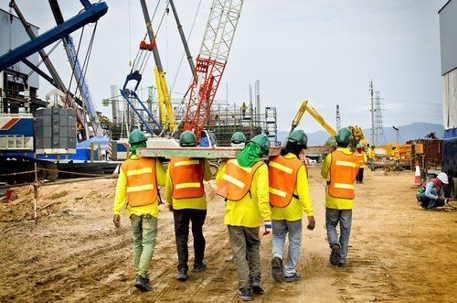Hot work is defined as any work that produces sparks, flames, and/or heat. Welding, grinding, brazing, and cutting fall into this category. While hot work accidents are common in the oil and gas industry, they also occur in food production, wastewater treatment, and other industries that involve hot work. Hot work accidents, such as fires and explosions, often result in serious injuries to employees. Many hot work incidents are also fatal.
Ways to Avoid an Accident While Performing Hot Work
1. Have Proper Training
Proper training and safety education is essential. Sadly, lack of safety training has been a factor in many hot work accidents. One such accident occurred in Boston in 2014. Welding sparks from workers who were installing a railing set fire to a nearby shed, which turned into a nine-alarm blaze that killed 2 firefighters and injured 18 other people. An investigation showed that the company who hired the workers failed to provide any safety training and committed many other oversights that contributed to the accident.
Using torches and other tools that produce heat around gases or flammable substances is extremely risky. That is why it is important for all hot work companies to provide adequate safety training and education to employees. State curriculum, as well as training manuals on the American Welding Society’s website, can provide valuable tools to teach hot work employees how to increase their safety and avoid an accident.
2. Use a Fire Watch
There are three aspects of the “fire triangle.” These include heat, oxygen, and a fuel source. Since hot work produces heat and oxygen, it is important to keep all fuel sources at a safe distance to avoid a fire or explosion. It is recommended that all fuel sources, such as flammable gases or combustible materials, should be moved at least 35 feet away from the hot work site. If the flammable substances cannot be moved, certified shielding materials (including pads, curtains, and welding blankets) can be used.
Changing conditions at a hot work area may require the flammable substances to be moved more than 35 feet away. For example, if you are welding next to a wooden shed that is 35 feet away, and the wind picks up, it is important to put up a shield or take other precautions. Having a fire watch (a group of 3 people who can perform hot work as a team) can increase the safety of everyone involved. The first person in the fire watch is the hot work operator, who is completing the work. The second person is a permit authorization individual who approves the work according to federal and state regulations. The third person is one who can pay attention to the changing conditions and take necessary precautions to avoid an accident.
3. Abide by the NFPA Standards
The National Fire Protection Association (NFPA) sets forth guidelines dealing with hot work. These regulations state that hot work must be performed in a designated area that is approved for hot work operations. If the site is not deemed hot work appropriate, a thorough hazard assessment must be conducted to see if there are combustible materials around the site. Following the NFPA standards and obtaining a hot work permit can increase workers’ safety and help ensure the worksite is free of flammable materials.
Diligent Representation for Hot Work Injury Victims
Since 1998, Morici, Longo & Associates has successfully represented hundreds of injured workers and construction workers. We possess a thorough knowledge of the Chicago legal system and can fight tenaciously to help you pursue the compensation you are owed. If you have been injured in a hot work accident, on-the-job slip and fall, or other type of work incident, we can investigate the situation and help build your case.
Contact our compassionate Chicago work injury attorneys today for a free consultation.

